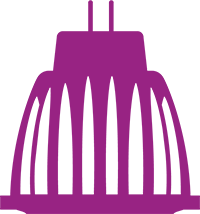4E Home » Publications » Product Energy Efficiency Trends » 4E PEET Status of Domestic Refrigerator Regulations 2022
This latest PEET report summarises the status of energy efficiency policy measures for domestic refrigeration appliances within 4E economies.
Domestic refrigeration appliances have been amongst the first products covered by most energy efficiency regulations. The relevant test methods and performance requirements for MEPS and energy labelling have been updated several times by most 4E economies to keep pace with the evolution in products and their improved energy efficiency. It is noteworthy that domestic refrigeration appliances consume considerably less electricity than they did two decades ago, while also becoming larger and cheaper in real terms1. Despite these considerable achievements, further improvements are still being made, as highlighted in the workshops, papers and discussions held between 4E Members, which are summarised here.
This summary condenses many highly technical regulatory documents. However, to gain a thorough understanding, it should not replace consideration of these regulations.
This report describes the main types of domestic refrigeration appliances and explains the coverage of relevant energy efficiency regulations within 4E economies. It concludes with a brief summary
of the major trends observed by 4E in the evolution of policies for
these products.
In this report, we focus on the following groups of domestic refrigeration appliances based on AC electric vapour-compression technology that are the most prevalent within 4E economies.
appliances that are designed to store fresh food but also be capable of freezing food and storing it. These are the most common type
appliances to store fresh food
appliances to freeze food and/or store frozen food of which the dominant types are upright or chest freezers.
Among the broad groupings there are many variants with regard to:
› The inclusion/use of compartments with different operating temperatures
› The configurations of the compartments and the number of external doors
› The choice of defrost method
› Whether the appliance is freestanding or built-in
› The ambient temperatures the appliance is designed to operate under
› Opaque or transparent doors
› The noise level
A glossary is provided at the end of this report to explain the terminology used.
Table 1 shows the coverage of MEPS and mandatory labelling for the types of domestic refrigerators in 4E economies.
Notes
In 4E economies, energy performance tests are conducted according to one of the two following procedures, which differ significantly:
The US DOE/CSA-C300-15 test method: used in USA and Canada
The IEC 62552 test method: used in Australia², China, European Economies, Japan and Korea
Similarities between the methods include:
Even amongst those economies that base their test on the IEC method, there are differences in the representative test temperature adopted and in the treatment of processing loads.
Variations in the design of domestic refrigeration appliances are treated very differently across 4E economies for the purpose of setting performance requirements.
For example, Canada and the US defines 42 distinct product categories, each of which have their own performance requirement. In Europe, these are all covered within a single product category and performance requirement formula, with adjustment factors applied to recognise the presence of specified features. These include frost-free, built-in design, the number of doors and load losses.
Conceptually, the European approach recognises that the performance of a domestic refrigeration appliance is dependent on the efficiency of the refrigeration system and the thermal loads it has to process, which are a function of the internal design temperatures and ambient temperature. These factors can be expressed and treated consistently for all vapour-compression cycle refrigeration devices while the impact of additional features can then be addressed by feature factors.
A further interesting development within the European regulation is the treatment of each compartment type as a separate entity, to cope with the development of new refrigeration products that may have several compartments operating at different temperatures (see following section and Box 1).
A number of 4E economies have updated their test methods and/or regulations recently, or are in the process of doing so. These include:
Europe have introduced major changes to all aspects of their regulation that have applied since March 2021.
Korea have changed the energy performance formula within regulations for domestic refrigeration appliances with effect from October 2021
The US has adopted changes in the energy performance test procedure that will take effect from April 11th 2022, although this is being applied in a manner that does not affect the ambition of the MEPS
New Zealand are moving to align with Australia, which should be finalized in June 2022
Changes to test methods amongst 4E economies based on the IEC method over recent years have produced greater alignment.
It is interesting to note that the thinking behind the new European regulations for refrigeration products takes into account a concern to reduce food waste, since there is evidence that around 11% of refrigerated food in the EU ends up as avoidable waste (a total of 156 Mt including waste in the supply chain). Since this may be reduced by the storage of food at more appropriate temperatures, the new regulation allows for products with multiple compartments with different temperature settings, and is designed so that it does not inhibit such innovation in product design. Further measures, such as encouraging the avoidance of food waste through the energy label may be considered in the future.
The Technology Collaboration Programme on Energy Efficient End-Use Equipment (4E TCP) has made its best endeavours to ensure the accuracy and reliability of the data used herein, however makes no warranties as to the accuracy of data herein nor accepts any liability for any action taken or decision made based on the contents of this report.
Views, findings and publications of the 4E TCP do not necessarily represent the views or policies of the IEA Secretariat or its individual member countries.



































Since 2008, the Energy Efficient End-Use Equipment TCP (4E) has tracked the efficiency trends of major globally traded products and corresponding energy efficiency regulations.
This enables 4E Members to identify whether their current policies are being effective, how these policies and the performance of products compares across different regions and opportunities for closer alignment.
This process forms a multi-lateral exchange between regulators within 4E Member countries that accelerates the development of product policies and increases the level of energy savings, while also reducing regulatory and cost burdens on industry and consumers.
Joint analysis by the IEA and 4E into the global impacts of energy efficiency regulations¹ has shown that:
The longest running energy efficiency (EES&L) programmes are estimated to deliver annual reductions of around 15% of total current electricity consumption.
In the nine countries/regions for which data were available, these programmes reduced annual electricity consumption by a total of around 1,580 terawatt-hours in 2018 – similar to the total electricity generation of wind and solar energy in those countries.
On average, the energy efficiency of new major appliances in countries with EES&L programmes has increased two to three times the underlying rate of technology improvement.
The average purchase price of appliances covered by EES&L programmes declined at a rate of 2-3% per year.
Within 4E economies, energy efficiency regulations, taken to include minimum energy performance standards (MEPS), mandatory and voluntary energy labelling in this report, are a key driver for product efficiency.
Core elements of these regulations include:
Since 2020, the 4E Product Energy Efficiency Trends (PEET) project has been monitoring the status of these elements across regulations for major appliance and equipment types across 4E Member countries.
1 IEA 4E TCP (2021), Achievements of Energy Efficiency Appliance and Equipment Standards and Labelling Programmes, IEA, Paris (2021). https://www.iea.org/reports/achievements-of-energy-efficiency-appliance-and-equipment-standards-and-labelling-programmes